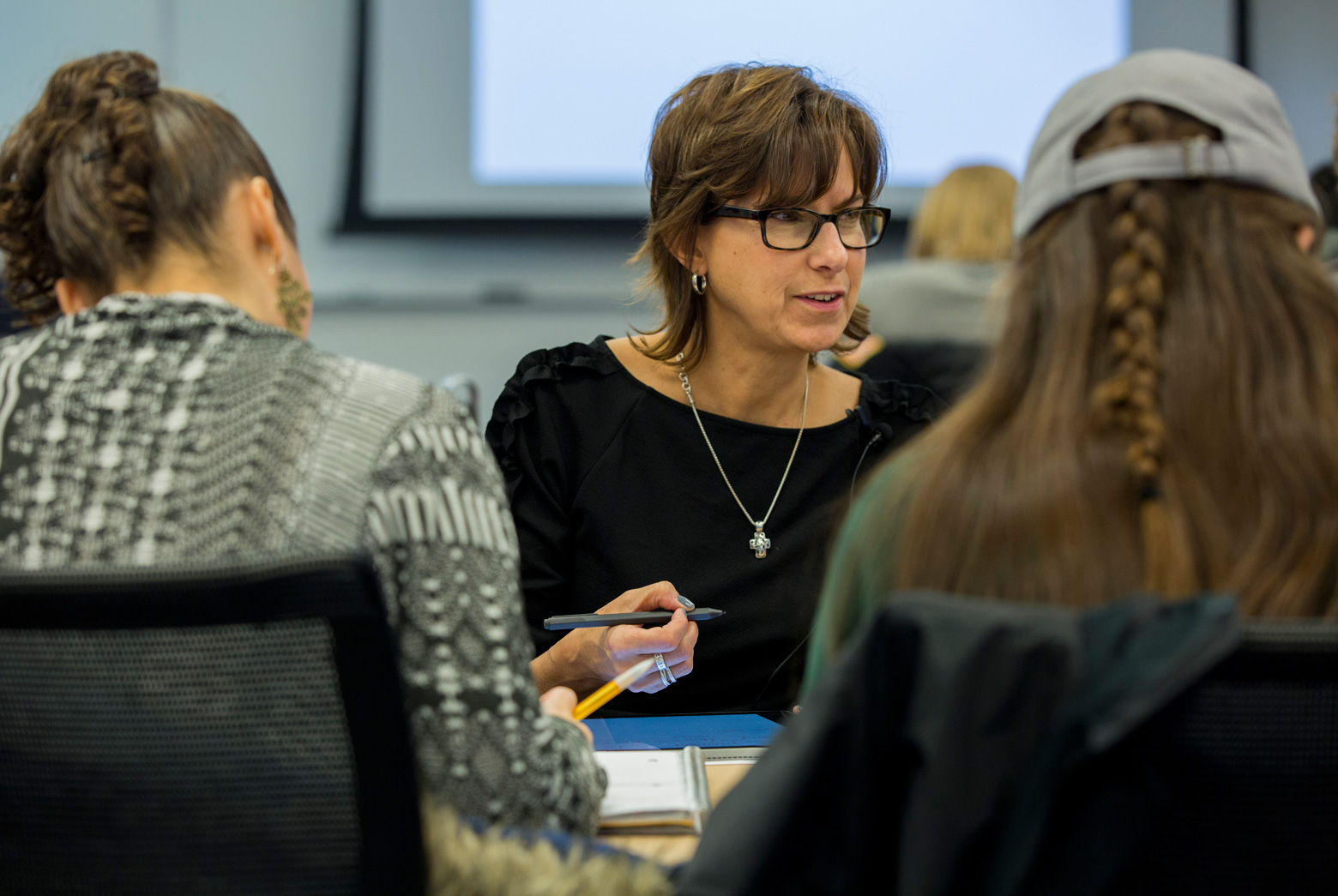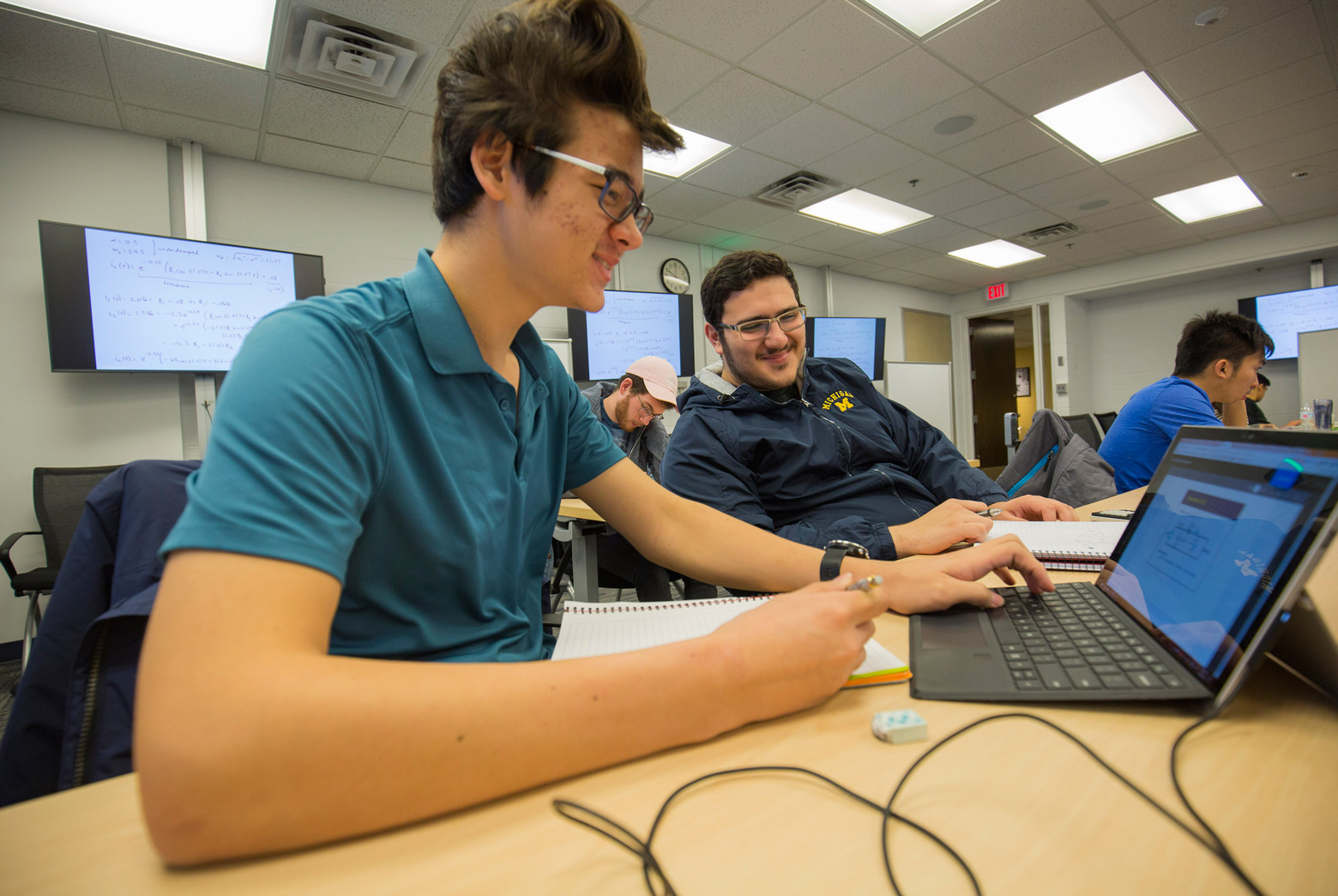$1.8M for ‘active learning’, a step toward broader change in higher education
Rare in engineering education research, the project involves a randomized control trial to determine if it’s effective.

 Enlarge
Enlarge
It’s the opposite of a passive lecture. “Active learning” is a teaching method that requires students to participate in their own learning, to talk to each other in class, and to purposefully engage with the material. It works, but professors are often wary of using it because they think students will rebel.
University of Michigan is the lead for a new multi-institutional project that aims to dispel professors’ fears and give them tools to implement active learning in their classrooms. With a $1.8 million grant from the National Science Foundation, the project will educate the educators about improving classroom interaction and using strategies to avoid student resistance and will then take the unusual step of measuring how well these professors improve student engagement.
Active learning takes many forms, such as polling the students throughout the lecture or having them work together in class to solve a problem about the day’s lesson. Not only do students benefit, the professors receive instant feedback on how well students are absorbing the information.
“When instructors successfully use active learning in a classroom, students can learn the material more deeply and apply principles better in different contexts,” said Cindy Finelli, director for engineering education research at the University of Michigan and lead investigator on the project.
When instructors successfully use active learning in a classroom, students can learn the material more deeply and apply principles better in different contexts.
Cindy Finelli
“Their self-confidence and their ability to communicate with each other can improve, and they often begin to identify themselves as future engineers instead of as students just taking a required course.”
Yet the sleepy lecture hall is common on U.S. campuses. To embolden professors to wake up their students and transform science, technology, engineering and math (STEM) classrooms, the project will create workshops to help STEM faculty across the nation use active learning.
“Some faculty hesitate to use active learning because they think their students will resist by vocally expressing their opposition, being confrontational, or evaluating the class or instructor poorly,” Finelli explained. “What we’ve discovered in our research, however, is that this isn’t happening.”
“Students do sometimes resist active learning, however this usually happens in a more passive way, such as working on unrelated classwork or only pretending to participate. We’ve identified ways to reduce even this passive form of resistance.”
Finelli is working with education experts from around the country—including Maura Borrego, professor of mechanical engineering and STEM education at University of Texas at Austin, Jenefer Husman, associate professor of education studies at University of Oregon, and Michael Prince, professor of chemical engineering at Bucknell University.

 Enlarge
Enlarge
Their workshops will introduce the research-based benefits of active learning and present empirical strategies that reduce student resistance. It will also provide time for participants to develop active learning exercises and create action plans to take back to their own institutions.
“This workshop really drills down into how STEM instructors can reduce the barrier of student resistance to active learning, which hasn’t been done before,” said Finelli.
Also unique to this type of project and rare in engineering education research, the project will feature a randomized control trial to better measure the workshop’s impact. STEM faculty across the country will be invited to attend, and they will be randomly split into a control group and a treatment group, with the treatment group taking the workshop in the first year, and the control group attending in the second year.
Through surveys, interviews and classroom observations, the team will analyze the teaching of STEM instructors and the behavior of students in both groups. They will use this data to see how effective the workshop is at supporting faculty as they employ active learning and utilize strategies to reduce resistance.
“We’re going beyond the traditional measures of studying workshops to get richer data to help us understand if we’re having an impact,” Finelli said.
With so much research supporting arguments in favor of active learning, yet so little active learning in practice, Finelli hopes this project will be the beginning of broader change in higher education.
Finelli is an associate professor of electrical engineering and computer science and also of education.
 MENU
MENU 
